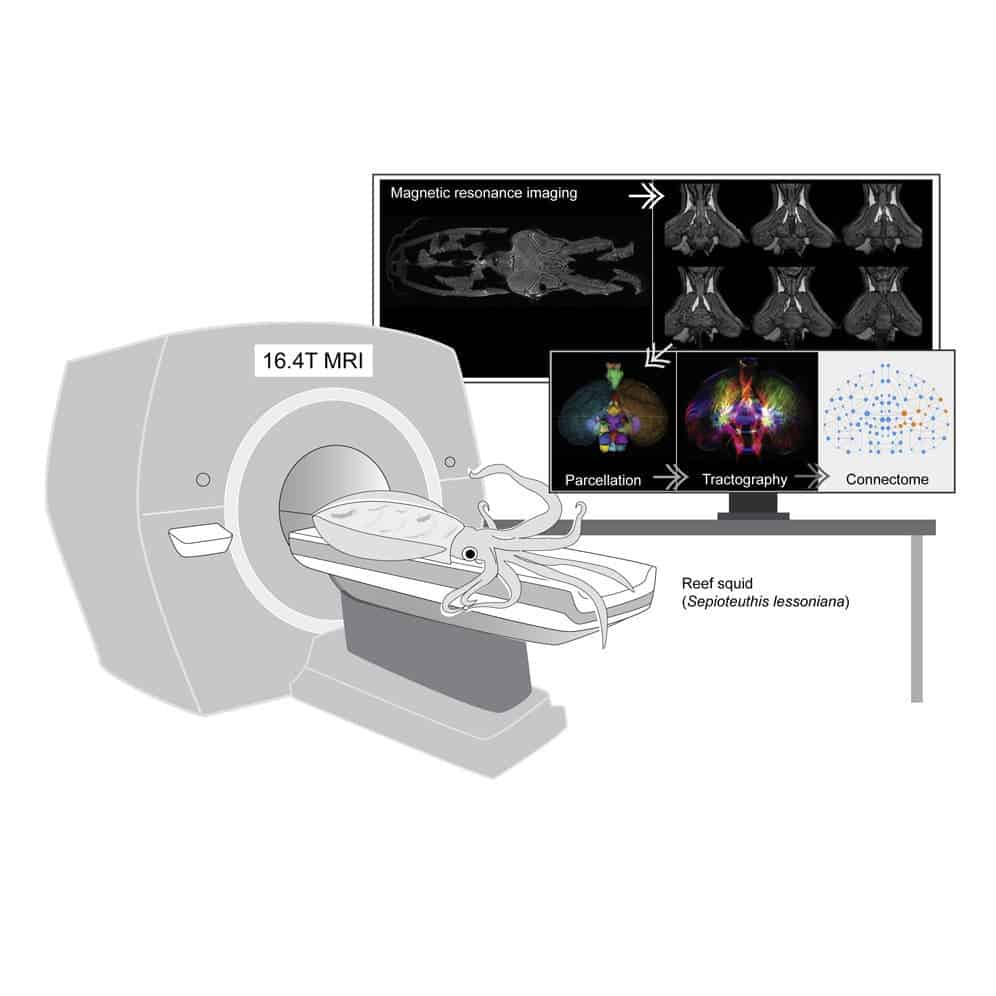New research at The University of Queensland (UQ) is peering into the neurology of squids, creating the first MRI model of their brains.

Image credits Wen-Sung Chung, Nyoman D. Kurniawan, N. Justin Marshall, (2020), iScience.
The research can help us understand how the squid’s abilities — their incredible camouflage for example — are handled by their central nervous system.
Brainy beasts
“Some cephalopods have more than 500 million neurons, compared to 200 million for a rat and 20,000 for a normal mollusc,” says Dr Wen-Sung Chung from UQ’s Queensland Brain Institute, first author of the study.
“This the first time modern technology has been used to explore the brain of this amazing animal.”
Cephalopods — a group whose name means “head foot” and includes cuttlefish, squid, and octopi — are intelligent animals with complex brains. We’ve been studying their brains for almost 50 years now, trying to map out all their neural connections, in order to understand how they work.
And work they do: cephalopods exhibit several complex behaviors, with their active camouflage being arguably the most famous. It’s even more impressive when you consider that cephalopods themselves are colorblind. They can also solve problems, count, recognize patterns, and communicate through various signaling processes.

Image credits Wen-Sung Chung, Nyoman D. Kurniawan, N. Justin Marshall, (2020), iScience.
We do know that cephalopod brains have evolved to have different subdivisions, and we do have a rough understanding of how they connect together. The team’s work focuses on understanding why this division emerged. They worked with the reef squid Sepioteuthis lessoniana, using techniques such as MRI to study and map the architecture of their brains. They report finding 145 new potential connections and pathways, more than 60% of which are linked to the squid’s vision and motor systems.
“We can see that a lot of neural circuits are dedicated to camouflage and visual communication. Giving the squid a unique ability to evade predators, hunt, and conspecific communicate with dynamic colour changes,” Dr Chung explains.
Dr Chung says that the present findings support a convergent evolution — the independent evolution of similar traits — between the nervous systems of cephalopods and that of vertebrates. These similarities, he adds, should allow us to make informed predictions about how the squid’s brain structure translates on the behavioral level. For example, the team considered that several of the new networks they found deal with locomotion and countershading camouflage (both abilities that rely on sight) based on their similarities to vertebrate brain networks.
Our findings will hopefully provide evidence to help us understand why these fascinating creatures display such diverse behaviour and very different interactions,” the authors conclude.
The paper “Toward an MRI-Based Mesoscale Connectome of the Squid Brain” has been published in the journal iScience.


